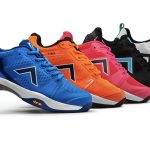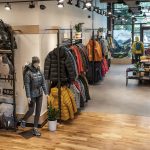Camping has continued to evolve to meet the needs of the influx of new and experienced outdoor enthusiasts in the wake of the pandemic. Despite these changes, camping remains an affordable travel option.
This insight comes from a new Kampgrounds of America, Inc. (KOA) — Camping & Outdoor Hospitality Report, released today, which highlights the industry’s resilience, even amid economic uncertainty.
Now in its 11th year, KOA’s Camping & Outdoor Hospitality Report provides a detailed analysis of the outdoor hospitality industry.
“Today, one-in-four leisure travelers consider themselves campers,” said Toby O’Rourke, president and CEO of KOA. “We’ve seen tremendous growth in participation over the past five years. While camping was down slightly year-over-year, we anticipate a resurgence in returning travelers to camping this year, with 72 percent of campers believing camping is the most cost-effective travel option.”
Key findings from the report highlight generational differences, camping preferences, the financial impacts of camping on local communities, and similarities between pre-pandemic campers in 2019 and today. Among other insights, the report also provides an in-depth analysis of traveler sentiment toward the economy and 2025 traveler intentions.
An Evolution and Reset of the Industry
- Over 11 million new households camped in 2024 compared to 2019.
- New campers accounted for approximately 5 percent of all campers in 2024, mirroring the percentage seen in 2019. They are younger and prefer locations that offer a variety of amenities and services, leaning toward private campgrounds and glamping resorts over more rustic camping spots.
- Campers are attracted to closer, more flexible escapes, with 62 percent choosing weekend getaways and 44 percent staying closer to home.
- Nostalgia is driving campers back to the basics, with 26 percent wanting to reconnect with family traditions.
Camping and the Economy
- Camping spending reached $61 billion in 2024, injecting vital resources into local economies.
- Daily spending rose to $200 per day per household, up $43 from 2023. Glampers and Gen Z spend the most, averaging $251 and $266 per day.
- 8-in-10 campers noted rising travel costs impacted trips, but instead of canceling plans, they prioritized low-cost activities like campfires, hiking and nature walks.
- 65 percent of campers plan to spend the same or more on travel than last year. Canadians are the least optimistic, with 31 percent planning to spend less, compared to 24 percent of Americans.
Sought-After Travel Experiences
- Campers and leisure travelers are focusing on experiences that enhance overall well-being, expressing a desire to slow down and be fully present in the moment.
- Experiencing wellness by water is a top travel trend, with 57 percent of campers and 53 percent of leisure travelers citing that walking on a beach or relaxing near water helps overall well-being.
- Solo camping is rising, with 1-in-5 campers taking their first solo trip in 2024. Gen Z and Millennials are most interested in solo trips this year.
- Camping is seen as a multi-generational activity. One-third of all campers feel camping with kids is more relaxing than participating in other forms of travel, and 22 percent are camping with extended family members.
“This year’s report highlights a dynamic reset in the camping landscape, where new generations and experienced campers alike are embracing a more flexible, experience-driven approach to outdoor travel,” said O’Rourke. “With increased interest in amenities, service, wellness, and family bonding, camping is evolving into a diverse and accessible option for all travelers. Despite economic pressures, it’s clear that the outdoor hospitality industry provides significant value for personal well-being and contributes positively to local communities, ensuring its continued strength and resilience.”
To view the full 2025 Camping and Outdoor Hospitality Report, visit KOA.com.
Image courtsey Kerr Lake














